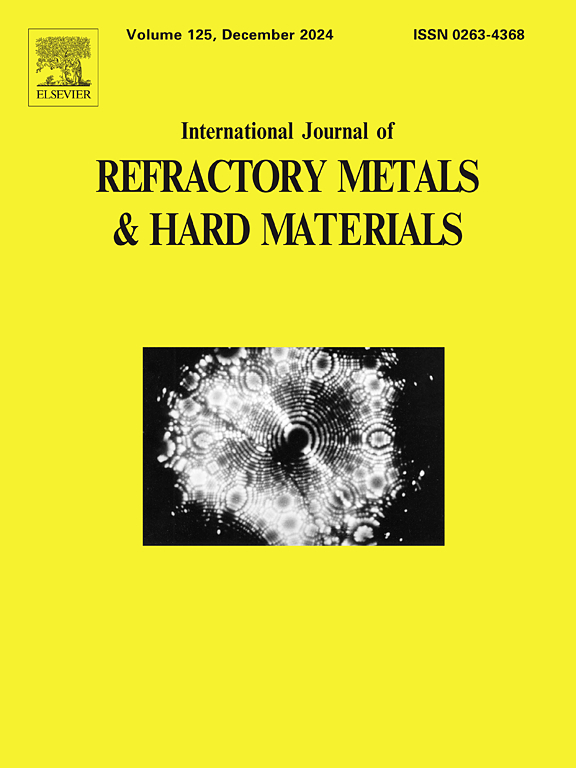Compressive performance and defects healing behavior of pure tungsten fabricated by LPBF coupled with subsequent hot isostatic pressing
IF 4.2
2区 材料科学
Q2 MATERIALS SCIENCE, MULTIDISCIPLINARY
International Journal of Refractory Metals & Hard Materials
Pub Date : 2025-02-17
DOI:10.1016/j.ijrmhm.2025.107100
引用次数: 0
Abstract
Additively manufactured pure tungsten parts are prone to defects such as gas pores, lack of fusions, and cracks, which significantly confines its wider application. Here, the hot isostatic pressing (HIP) treatment was employed to improve the microdefects using high temperature and high pressure conditions. The microstructure evolution and compressive performance were systematically investigated. The results revealed that the HIP treatment contributed to filling the gas pores and lack of fusions, and healing the crack to discontinuous chain-like pores. The grain size ascended with the more concentrated distribution at both views, and the texture orientation evolved towards the 〈101〉 and 〈111〉, accompanied by the weaker 〈001〉. In addition, the LAGBs penetrated the HGABs storing the strain energy required for crack propagation. The compressive performance of additively manufactured pure tungsten was significantly enhanced, with the compressive strength increasing from 944 MPa to 1263 MPa (about 33.8 %) and the compressive strain rising from 11.0 % to 16.0 % (around 45.4 %). These results aid in offering another way to understand the micro defects and heal them of pure tungsten or other refractory metals.
求助全文
约1分钟内获得全文
求助全文
来源期刊
CiteScore
7.00
自引率
13.90%
发文量
236
审稿时长
35 days
期刊介绍:
The International Journal of Refractory Metals and Hard Materials (IJRMHM) publishes original research articles concerned with all aspects of refractory metals and hard materials. Refractory metals are defined as metals with melting points higher than 1800 °C. These are tungsten, molybdenum, chromium, tantalum, niobium, hafnium, and rhenium, as well as many compounds and alloys based thereupon. Hard materials that are included in the scope of this journal are defined as materials with hardness values higher than 1000 kg/mm2, primarily intended for applications as manufacturing tools or wear resistant components in mechanical systems. Thus they encompass carbides, nitrides and borides of metals, and related compounds. A special focus of this journal is put on the family of hardmetals, which is also known as cemented tungsten carbide, and cermets which are based on titanium carbide and carbonitrides with or without a metal binder. Ceramics and superhard materials including diamond and cubic boron nitride may also be accepted provided the subject material is presented as hard materials as defined above.

 求助内容:
求助内容: 应助结果提醒方式:
应助结果提醒方式:


